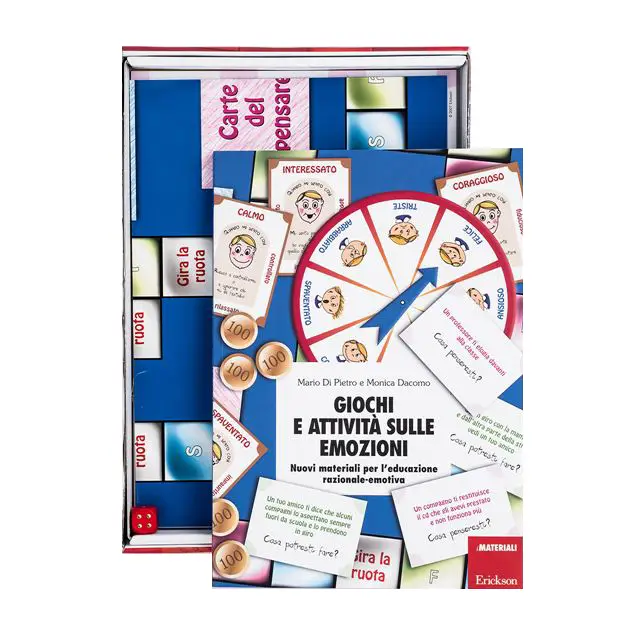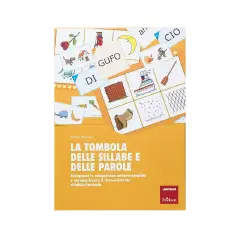Games and Activities on Emotions
Look it up in the primary and secondary catalog
- ✅ Kit innovativo basato sull’educazione razionale-emotiva, adatto a bambini e adolescenti.
- ✅ Include libro guida per l’insegnante, carte delle emozioni, gioco da tavolo e barometro delle emozioni.
- ✅ Favorisce la comprensione, l’espressione e la gestione costruttiva delle emozioni.
- ✅ Ideale per scuole, sedute di terapia o uso famigliare per promuovere l’intelligenza emotiva.
- ✅ Adattabile a diverse fasce d’età e contesti; utile in casi di ansia o difficoltà comportamentali.
Full description
The "Games and Activities on Emotions" kit by Mario Di Pietro and Monica Dacomo is an innovative set of educational tools designed to guide children and adolescents in exploring and managing their emotions. It is based on the principles of rational-emotional education, which emphasizes the importance of understanding and articulating one's emotional states in a constructive way.
Main components of the kit:
Teacher's Guide Book: This manual provides detailed instructions on how to use the materials included in the kit, with explanations and scenarios to facilitate play and learning sessions.
Thinking, Feeling and Doing Game: This board game is an interactive journey that confronts players with different emotional situations. Participants are encouraged to explore how they might feel in these circumstances, what they might think, and how they might react or manage these emotions in a positive way.
Emotion and Emotional Faces Cards: These illustrative cards are visual tools that help children identify and communicate various emotional states through facial expressions. They serve as a starting point for activities and discussions, enabling participants to recognize emotions in others and themselves.
Emotion Barometer: This interactive device is used to help children explore and relate personal experiences associated with specific emotions. Acting as a visual prompt, it stimulates discussion and reflection on how certain situations evoke different feelings.
Kit applications:
In Educational Environment: Teachers can use these materials to create interactive lessons that promote emotional intelligence, self-understanding and empathy among peers. These activities are designed to be adaptable for different age groups, making them valuable resources for primary and secondary education.
In Therapy and Counseling Sessions: Therapists can incorporate these games and activities into their sessions to help young clients express and manage their emotions. This type of playful interaction can be especially helpful in treating children with difficulties in managing stress, anxiety, or behavioral problems.
At Home: Parents can use these tools to encourage open communication and emotional awareness within the family. Through play and discussion, children can learn to share their feelings in a safe and supportive environment.






